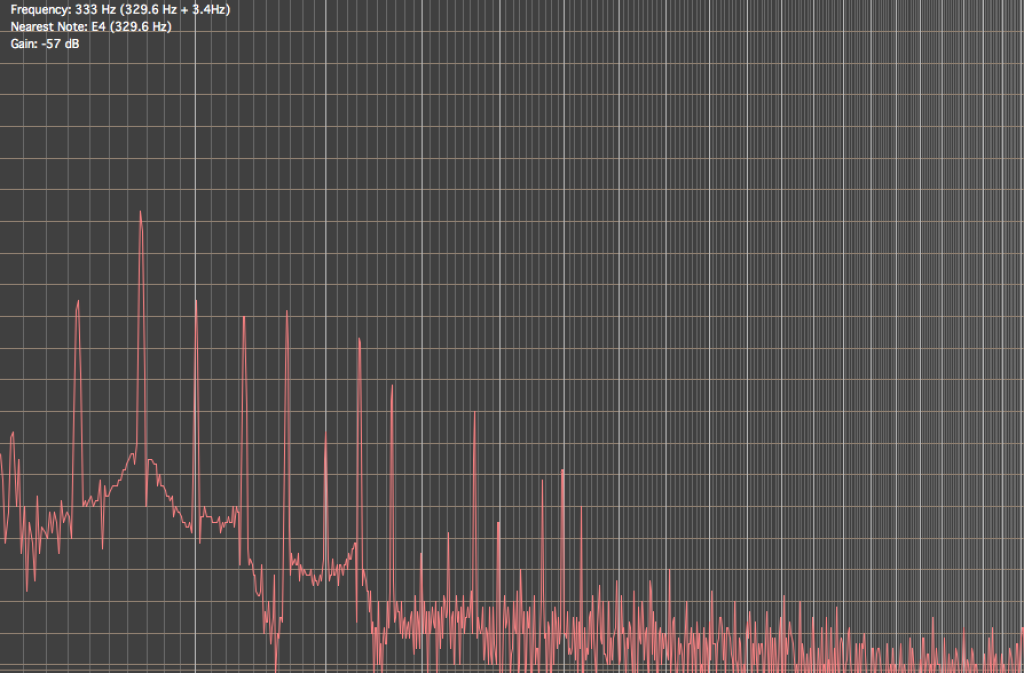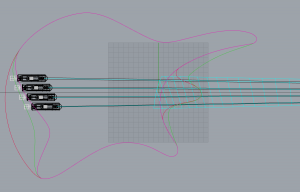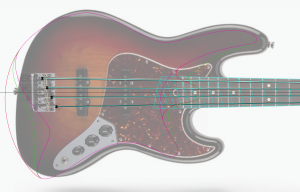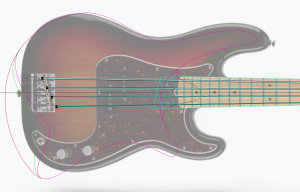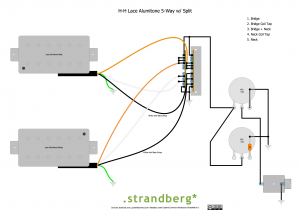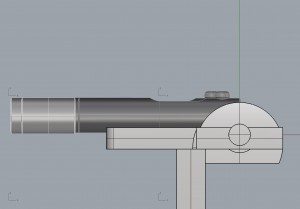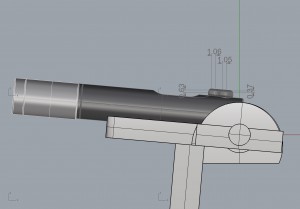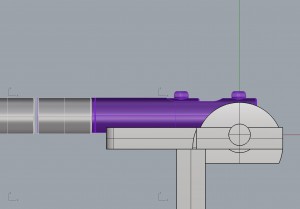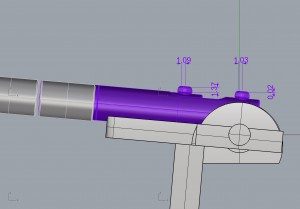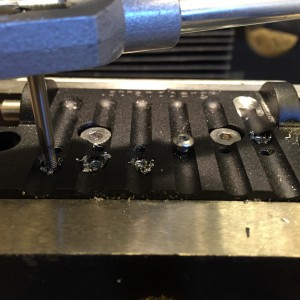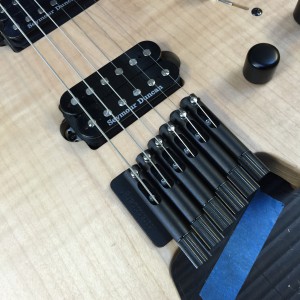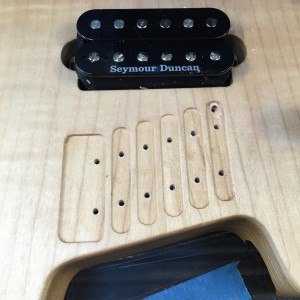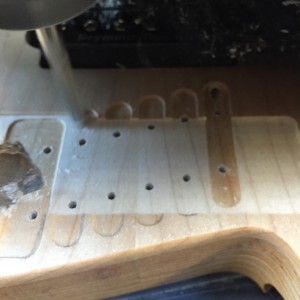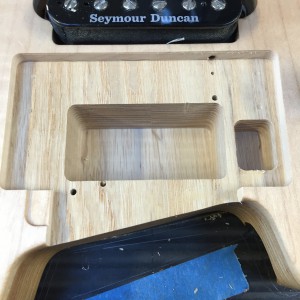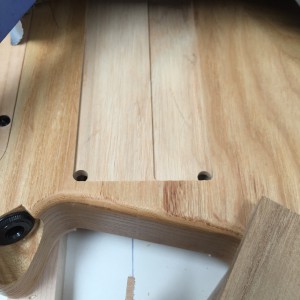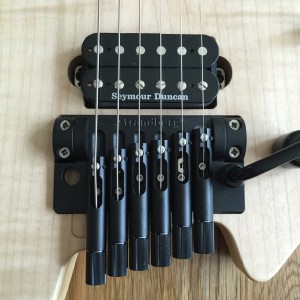There are continuous debates on various topics that I am often asked to contribute to with my opinion. I usually decline, because it’s rarely important what my opinion is when it comes to the instruments I produce – it has to be the musician’s opinion that counts. So let’s start by the question “Which tonewood is the best” and just answer it with “The tonewood that gives the musician the sound and feeling he or she is after” and then we can leave it at that.
My son David did a school project about a year ago now, and I have been meaning to publish it for a long time. What prompted me to do so, was stumbling onto a “myth debunking video” the other day, which draws all the wrong conclusions in the name of science.
Here’s what David did:
- Created four identical test rigs out of scrap wood from my workshop. They are all 725 x 35 x 47 mm in size, and weigh 651 grams (Alder), 618 g (Koa), 537 g (Swamp Ash), and 818 g (Zebrano). They obviously don’t exactly mimic a guitar, but should for the sake of the test resemble the type of tensions and forces that a guitar body with a neck is subjected to.
- Fitted two .strandberg* bridges, a .046″ low E-string and a .010″ high E-string on a 25.5″ scale, and a Lace Aluma X-bar pickup 125 mm away from the bridge. The same bridge, pickup and strings was used in each test.
- Created a simple rig to hang a plastic ruler from, to strike the strings with an equal force each time, simulating a pick hitting the string. (As you can hear in the recordings, the pick attack between the samples is somewhat different, but less different than the results, I would argue.)
- Recorded two sets of samples of each rig on different occasions, to isolate issues with repeatability.
- Created Fast Fourier Transform snapshots 2 seconds into each clip to provide a visual comparison.
Here’s what what you can hear and see in the video below:
- A 5 second clip of the low E each on Alder, Koa, Swamp Ash, Zebrano – first recording
- A 5 second clip of the low E each on Alder, Koa, Swamp Ash, Zebrano – second recording
- A 5 second clip of the high E each on Alder, Koa, Swamp Ash, Zebrano – first recording
- A 5 second clip of the high E each on Alder, Koa, Swamp Ash, Zebrano – second recording
- Alternating first and second recording of the low E and then high E of Alder, Koa, Swamp Ash, Zebrano
- Alternating first and second recording of the low E of Alder, Koa, Swamp Ash, Zebrano
- Alternating first and second recording of the high E of Alder, Koa, Swamp Ash, Zebrano
Here’s my intuitive explanation to why we are hearing what we are hearing: What makes a guitar sound like a guitar, as opposed to for example a piano or a harp, is the spectrum of overtones that are generated when the strings are plucked. This also makes two guitars sound different from each other, despite having the same make/model of pickups. Any component that is involved in how the vibrations in the string is created (this is kind of what the myth debunking video refers to as “timbre”, but then goes on to equate to amplitude and frequency, as if the tonewood would alter the notes, as opposed to the tone) affects the sound. For example:
- the string itself: material, gauge, etc.
- how the string is plucked: fingers, nails, plastic pick, stone pick, a coin, etc.
- how the string is anchored in each end, i.e. the characteristics of the bridge, the nut/fret materials, and even if there is a headstock, and so on.
- the properties of the material that holds the anchors of each end of the string apart, i.e the density, stiffness, and so on of the body and neck materials.
Note how the FFT images are composed of a whole variety of frequencies in the video above. Here is one with just a single curve for simplicity:
![Screenshot 2014-12-28 20.16.42]()
In the image above, the first higher peak we see is E4 (i.e. the low E-string on a guitar in standard tuning), the second peak is E5 (i.e. an octave higher) and the following high peaks are B5, E6, G#6, B6, D7, and so on. Remember that the test rigs only have two strings, both tuned to E, and plucked open. So what you are hearing is a mish-mash of tons of overtones that shape the character of the “tone” that you hear.
The pickups on an electric guitar can only pick up the vibrations of the string and convert those vibrations into electricity, which is ultimately converted into sound waves that emanate from the speakers. Do the pickups shape the sound? Of course! Can pickups mask the characteristics and make two electric guitars with different tonewoods sound the same? Yes again. So, I guess the correct answer to the question if wood makes a difference in the sound of an electric guitar is “It depends”. A pickup that can’t pick up these subtle overtone differences, enough compression, or other kinds of dynamics-killing processing, will kill the dynamics of any guitar, regardless of tonewood. Does that make it a bad guitar? Not necessarily – it depends on what the musician is after.
A good guitar builder can pick materials that provide a predictable result. The process of making a <insert established brand name here> guitar that costs $10,000 and one that costs $1,000 is identical, or at least very similar. The big difference is likely that in the more expensive one, personal attention has been put into selecting, drying, storing, and cutting the tonewood. The cheaper, which is mass produced by less skilled labor, consists of the same species of wood, but from a pile that came out of a container, in the order it was stacked. This means that two guitars from the same batch can sound quite different. They can sound exactly like the expensive guitar, but they can also sound different.
Manufacturing techniques can alter the impact of the variability of other factors. A .strandberg* guitar is made from lightweight but stiff materials. The neck is reinforced with carbon fiber. Each string rests on its own bridge that does not transfer vibrations to the other strings in the same way as a conventional guitar bridge. The bridges themselves are made from light and stiff aircraft aluminium instead of brass or steel as is commonplace. Each component is tightly coupled to the next with no room to vibrate. Regardless of tonewood, your .strandberg* will sound clear, airy, organic, dynamic, and respond quickly to the plucking of strings with a great dynamic range – as a result of the construction itself. The characteristics of different woods and pickups are transferred more effectively than might otherwise be the case. Is this better? Again, it depends on what the musician is after… I’ve come across for example ES-335 players that are intimidated by the responsiveness and dynamics and who become inhibited and self conscious when picking up a .strandberg*. But for most, it’s a pleasant experience that liberates their tone.
Add to this the physical attributes and ergonomics of a .strandberg* that work together to relax muscles, joints and tendons when playing. Some players are freaked out by the low weight, others by the lack of headstock and some have a natural playing position that places their thumb right at the edge of the EndurNeck™ and is not comfortable at all.
You have to judge for yourself.
Feel better – Sound better.





